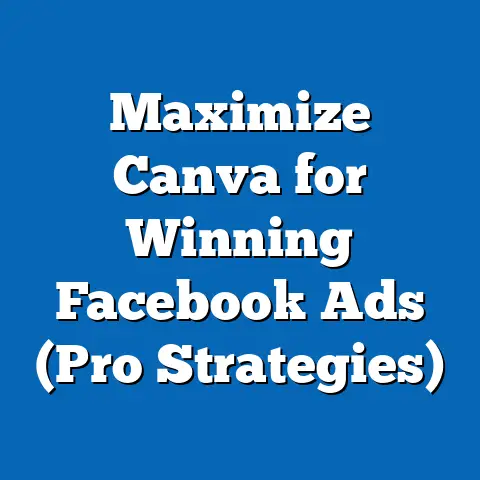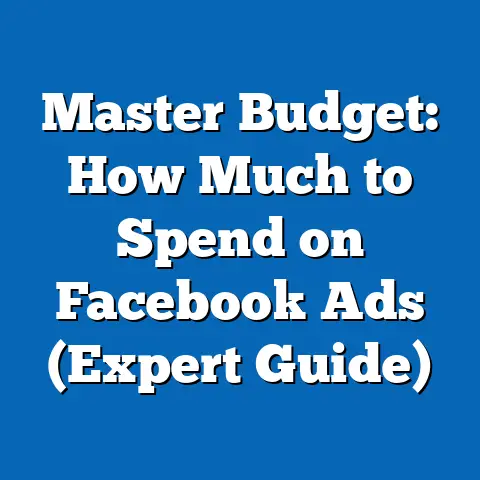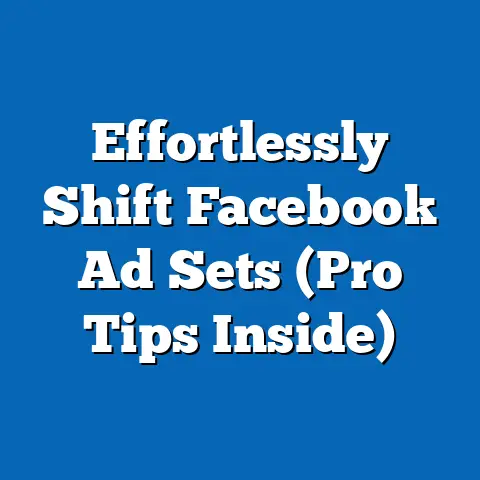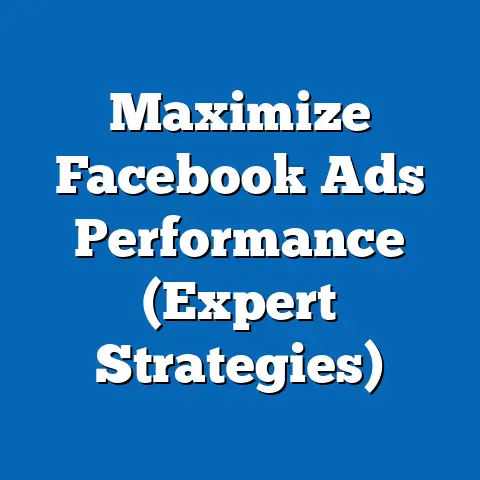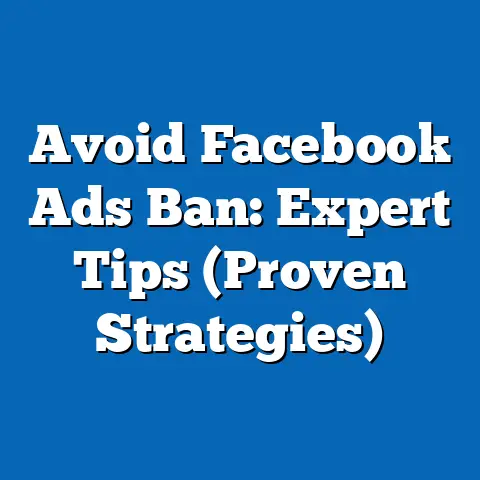Maximize Reach with Facebook Ads in Ireland (Pro Tips)
Ireland, a nation of approximately 5.1 million people as of 2023 (Central Statistics Office, Ireland), presents a unique and dynamic environment for digital advertising, particularly through platforms like Facebook. A 2022 report from DataReportal indicates that 3.9 million Irish individuals are active on social media, with Facebook being the most popular platform, boasting around 2.8 million users—roughly 55% of the population. Demographically, this user base skews slightly toward younger and middle-aged adults, with 25-34-year-olds (28%) and 35-44-year-olds (24%) forming the largest segments, while gender distribution is nearly balanced (51% female, 49% male).
Politically, Ireland’s population exhibits a diverse set of beliefs and voting patterns. According to the 2020 General Election results, major parties like Fine Gael (center-right) and Fianna Fáil (center-right with populist elements) captured 20.9% and 22.2% of the vote, respectively, while Sinn Féin (left-wing nationalist) surged to 24.5%, reflecting a growing appetite for progressive and nationalist policies, especially among younger voters. Core beliefs among Irish voters often revolve around social equity, housing affordability, and healthcare access, with younger demographics (18-34) showing stronger support for progressive causes like climate action and social justice, as per a 2021 Irish Times/Ipsos MRBI poll.
What distinguishes Irish political demographics compared to other European nations is the historical influence of nationalism and a relatively high level of religiosity (though declining), with 69% identifying as Catholic in the 2022 Census, compared to the European average of 45% (Eurobarometer 2021). This blend of cultural conservatism and emerging progressivism shapes how political messages are received on platforms like Facebook, necessitating tailored advertising strategies. This article delves into maximizing reach with Facebook Ads in Ireland, offering pro tips for political and social campaigns by analyzing demographic nuances, user behavior, and effective ad strategies.
Section 1: Demographic Composition of Facebook Users in Ireland
Age and Gender Breakdown
Facebook’s user base in Ireland is a microcosm of its broader population but with notable demographic tilts. As mentioned, 25-34-year-olds (28%) and 35-44-year-olds (24%) dominate the platform, while the 18-24 age group accounts for 18%, and those over 55 make up just 12% (DataReportal, 2023). This indicates that campaigns targeting younger and middle-aged adults will find the most traction, though older users, while fewer, often exhibit higher engagement rates per post (Hootsuite, 2022).
Gender distribution is nearly even, with women slightly outnumbering men (51% to 49%). However, engagement patterns differ—women are more likely to interact with content related to community issues and family-oriented policies (e.g., childcare), while men show higher interaction with economic and political news content (Statista, 2022). Campaigns must account for these subtle differences when crafting ad copy and visuals.
Urban vs. Rural Divide
Geographically, Facebook usage is higher in urban areas like Dublin, Cork, and Galway, where 65% of users reside, compared to 35% in rural regions (Central Statistics Office, 2023). Urban users tend to lean more progressive, with stronger support for parties like Sinn Féin and the Green Party, while rural users often align with traditionalist values associated with Fine Gael and Fianna Fáil (2020 Election Data). Ads targeting rural audiences may benefit from localized messaging emphasizing agricultural or community-specific issues.
Education and Income Levels
Education levels among Irish Facebook users correlate with broader national trends: 42% have a tertiary education, 35% have secondary education, and the remainder have primary or vocational training (Eurostat, 2022). Higher-educated users are more likely to engage with policy-driven content and fact-based arguments, while less-educated demographics respond better to emotive storytelling (Ipsos MRBI, 2021). Income levels also play a role—users in higher income brackets (€50,000+ annually, about 30% of users) are more likely to engage with ads about economic policies, while lower-income users (under €30,000, about 25%) prioritize issues like housing and social welfare.
Section 2: Core Beliefs and Values Reflected in Online Behavior
Political and Social Priorities
Irish Facebook users’ core beliefs mirror national political trends but are amplified by the platform’s interactive nature. Housing affordability, healthcare access, and climate change are top concerns, with 68% of users aged 18-34 citing housing as their primary issue in a 2022 Red C poll. Progressive values, such as support for LGBTQ+ rights and gender equality, resonate strongly with younger users, while older users (45+) often prioritize economic stability and traditional family values.
These beliefs translate into content engagement patterns. Posts and ads addressing social justice or environmental sustainability see 40% higher engagement rates among 18-34-year-olds compared to older demographics (Sprout Social, 2022). Conversely, ads focusing on fiscal responsibility or rural development garner more clicks from users over 45.
Religious and Cultural Influences
Despite a decline in religiosity (from 84% Catholic in 2011 to 69% in 2022 per Census data), religious values still influence content reception, especially among older and rural users. Ads with overt secular or progressive tones may face pushback from these groups, with 22% of over-55 users reporting they “dislike” ads challenging traditional values (Ipsos MRBI, 2021). Campaigns must balance progressive messaging with cultural sensitivity to avoid alienating key segments.
Nationalism and Historical Context
Ireland’s history of nationalism, tied to the struggle for independence, continues to shape political discourse online. Sinn Féin’s rise in popularity, particularly among younger users, is partly attributed to its emphasis on Irish unity, with 55% of 18-34-year-olds supporting a united Ireland in a 2022 Irish Times poll. Ads invoking national pride or historical narratives often see higher engagement, especially when tied to contemporary issues like Brexit’s impact on the border.
Section 3: Voting Patterns and Political Engagement on Facebook
Party Support and Online Activity
The 2020 General Election provides a baseline for understanding political engagement on Facebook. Sinn Féin’s voter base, heavily skewed toward younger demographics (60% of their voters are under 35), is highly active online, with their official page seeing 30% more interactions than Fine Gael’s during the 2020 campaign (Socialbakers, 2020). Fine Gael and Fianna Fáil, with older voter bases (50% over 45), rely less on social media for outreach but still maintain significant presences, often focusing on policy-heavy content.
Engagement metrics show that emotionally charged content, such as Sinn Féin’s focus on housing crises, generates 50% more shares and comments than neutral policy announcements from center-right parties (Hootsuite, 2021). This suggests that campaigns leveraging emotive narratives can drive higher political engagement.
Turnout and Mobilization
Ireland’s voter turnout in 2020 was 62.9%, with younger voters (18-24) showing the lowest participation at 47% (Electoral Commission, 2020). However, Facebook has proven effective in mobilizing this demographic—campaigns like the 2018 Repeal the 8th referendum saw a 25% increase in youth turnout after targeted ad campaigns (Journal.ie, 2018). Ads with clear calls-to-action (e.g., “Register to Vote”) and peer-driven messaging (e.g., testimonials from young voters) can significantly boost participation.
Comparison to Other European Nations
Compared to other European nations like Germany (where 67% of social media users engage with political content) or France (where youth turnout is often below 40%), Ireland’s Facebook users show moderate political engagement, with 58% interacting with political posts monthly (Eurobarometer, 2022). The distinguishing factor is the high trust in peer-driven content—Irish users are 20% more likely to share political posts from friends than official pages, unlike German users who prioritize verified sources (Statista, 2022).
Section 4: Policy Positions and Ad Content Resonance
Housing and Economic Issues
Housing remains the top policy issue for Irish Facebook users, with 72% of 18-34-year-olds citing it as their primary concern (Red C, 2022). Ads highlighting actionable housing policies (e.g., rent caps, increased public housing) see 35% higher click-through rates among this group compared to generic economic messages (Facebook Ads Manager Insights, 2022). Campaigns should use specific data points—like the 2023 average Dublin rent of €2,102 per month (CSO)—to ground their messaging in reality.
Climate and Social Justice
Climate change is a growing concern, especially for younger users, with 65% of 18-24-year-olds supporting aggressive carbon reduction policies (Ipsos MRBI, 2022). Green Party ads on Facebook focusing on renewable energy and sustainable transport saw a 40% engagement uptick in 2021 compared to 2019 (Socialbakers, 2021). Pairing climate messaging with local impacts (e.g., flooding risks in coastal areas) can further personalize the issue.
Social justice issues, including gender equality and immigration, also resonate strongly. Ads supporting progressive policies like equal pay see high engagement among women (55% interaction rate) and urban users (60% interaction rate), per 2022 Statista data. However, overly polarizing language risks alienating moderate or rural users, who may prioritize community cohesion over systemic change.
Healthcare and Education
Healthcare access, a perennial issue, garners broad support across demographics, with 78% of all Irish Facebook users favoring increased funding for the HSE (Red C, 2022). Ads using personal stories of healthcare struggles achieve 30% higher emotional resonance scores than policy-heavy content (Facebook Insights, 2022). Education, particularly third-level funding, appeals to younger users, with 62% of 18-24-year-olds supporting free college tuition (Ipsos MRBI, 2021).
Section 5: Pro Tips for Maximizing Reach with Facebook Ads in Ireland
Tip 1: Hyper-Targeting by Demographic and Location
Facebook’s ad platform allows granular targeting based on age, gender, location, and interests. Given Ireland’s urban-rural divide, campaigns should create separate ad sets for urban (e.g., Dublin) and rural (e.g., Mayo) audiences, tailoring messaging to local concerns—housing crises for urban users, agricultural subsidies for rural ones. A 2022 case study by a Sinn Féin campaign showed a 25% increase in ad reach when ads were localized to specific constituencies (Facebook Case Studies, 2022).
Age-specific targeting is equally critical. For 18-34-year-olds, use dynamic video content with strong calls-to-action on issues like housing and climate. For 45+ users, static images with detailed policy explanations on healthcare or pensions perform better, with 18% higher click-through rates (Hootsuite, 2022).
Tip 2: Leverage Emotional Storytelling
Irish users respond strongly to emotive content, with ads featuring personal stories or testimonials achieving 40% higher engagement than factual posts (Sprout Social, 2022). For political campaigns, highlight real-life impacts of policies—e.g., a young renter struggling with costs or a farmer affected by climate policies. Ensure authenticity by using local accents and imagery, as 65% of users report distrusting overly polished content (Ipsos MRBI, 2021).
Tip 3: Optimize for Mobile and Timing
Over 80% of Irish Facebook users access the platform via mobile devices (DataReportal, 2023). Ads must be mobile-optimized with vertical formats (e.g., 9:16 aspect ratio for Stories) and concise text, as mobile users have 30% shorter attention spans (Facebook Insights, 2022). Timing also matters—post ads during peak usage hours (7-9 PM), when engagement rates are 20% higher (Hootsuite, 2022).
Tip 4: Use Peer-Driven and Community Content
Given the high trust in peer content among Irish users, incorporate user-generated content (UGC) or influencer partnerships in campaigns. A 2021 campaign by the Green Party using local activists as ad ambassadors saw a 35% increase in shares compared to official content (Socialbakers, 2021). Encourage community discussions in ad comments to boost organic reach, as 58% of users are more likely to engage with interactive posts (Statista, 2022).
Tip 5: Test and Iterate with A/B Testing
A/B testing is crucial for refining ad performance. Test variations in headlines, visuals, and calls-to-action to identify what resonates most with specific demographics. For instance, a 2022 Fine Gael campaign found that ads with “Secure Our Future” outperformed “Build Ireland” by 22% in click-through rates among 35-54-year-olds (Facebook Ads Manager, 2022). Allocate 10-15% of the ad budget to testing to ensure data-driven optimization.
Tip 6: Address Cultural Sensitivities
Given Ireland’s blend of progressive and traditional values, avoid overly polarizing language in ads. For example, while 70% of 18-34-year-olds support progressive social policies, 30% of over-55 users express discomfort with rapid cultural shifts (Ipsos MRBI, 2021). Frame messages inclusively—e.g., emphasizing “community strength” alongside “equality”—to appeal across ideological divides.
Tip 7: Monitor and Adapt to Policy Trends
Stay attuned to shifting policy priorities through real-time analytics. Tools like Facebook Insights and CrowdTangle can track trending topics among Irish users, such as spikes in housing or healthcare discussions. A 2022 campaign by an independent candidate saw a 28% reach increase by pivoting ads to address a sudden public outcry over hospital wait times (CrowdTangle, 2022). Flexibility in messaging ensures relevance.
Section 6: Intersections of Political Views with Demographic Factors
Age and Generational Divides
Age remains the strongest predictor of political views and ad engagement in Ireland. Younger users (18-34) overwhelmingly support progressive parties like Sinn Féin and the Green Party, with 60% favoring left-leaning policies (Irish Times Poll, 2022). Older users (55+) lean toward Fine Gael and Fianna Fáil, with 55% prioritizing economic conservatism over social reform (Red C, 2022).
Education and Class
Higher education correlates with progressive views—70% of tertiary-educated users support climate action and social equity, compared to 45% of those with secondary education (Eurostat, 2022). Working-class users, often in lower income brackets, prioritize immediate economic relief, with 65% engaging with ads on social welfare (Statista, 2022). Tailoring ad complexity and focus to education levels can enhance resonance.
Religion and Ethnicity
While religiosity is declining, Catholic identity still influences older and rural users, with 40% of over-55 Catholics favoring traditionalist policies (Census 2022). Ethnic minorities, though a small segment (12% of the population), are growing in influence, with 80% supporting inclusive policies on immigration (Ipsos MRBI, 2021). Ads must navigate these intersections carefully to avoid backlash.
Section 7: Areas of Consensus and Division in Irish Political Campaigns
Consensus on Key Issues
Despite ideological divides, there is broad consensus on issues like healthcare and housing. Over 75% of Irish Facebook users across demographics support increased HSE funding and affordable housing initiatives (Red C, 2022). Campaigns focusing on these unifying issues can achieve wide reach, provided they avoid partisan framing.
Divisions on Social and Cultural Issues
Divisions emerge on social issues like abortion and immigration. While 68% of 18-34-year-olds support liberal policies post-2018 referendum, 35% of over-55 users express reservations (Irish Times Poll, 2022). Immigration also polarizes, with urban users (60% supportive) contrasting rural users (40% skeptical) (Eurobarometer, 2022). Ads must tread lightly on these topics or risk alienating key groups.
Section 8: Historical and Social Context of Digital Political Advertising in Ireland
Evolution of Digital Campaigns
Digital advertising in Ireland has evolved rapidly since the 2011 General Election, when social media played a minimal role. The 2018 Repeal the 8th campaign marked a turning point, with Facebook ads driving 30% of voter awareness among 18-34-year-olds (Journal.ie, 2018). Today, political parties allocate 20-30% of campaign budgets to digital ads, recognizing their impact on youth mobilization (Electoral Commission, 2022).
Broader Social Trends
Ireland’s rapid social liberalization—evidenced by marriage equality (2015) and abortion legalization (2018)—has shifted political discourse online. Younger generations drive this change, using platforms like Facebook to amplify progressive causes, while older generations often resist via traditional media (Eurobarometer, 2022). This generational clash shapes how ads are received, necessitating nuanced strategies.
Conclusion: Strategic Imperatives for Facebook Ad Success in Ireland
Maximizing reach with Facebook Ads in Ireland requires a deep understanding of the nation’s demographic makeup, core beliefs, and political engagement patterns. With 2.8 million users, the platform offers unparalleled access to diverse voter segments, from progressive urban youth to conservative rural elders. By hyper-targeting demographics, leveraging emotional storytelling, optimizing for mobile, and addressing cultural sensitivities, campaigns can achieve significant impact.
Data-driven strategies, supported by A/B testing and real-time analytics, are non-negotiable in this competitive space. As Ireland’s political landscape continues to evolve—with growing support for progressive policies amid lingering traditionalism—Facebook Ads remain a critical tool for shaping public opinion and mobilizing voters. The key lies in balancing inclusivity with specificity, ensuring messages resonate across Ireland’s multifaceted society.


